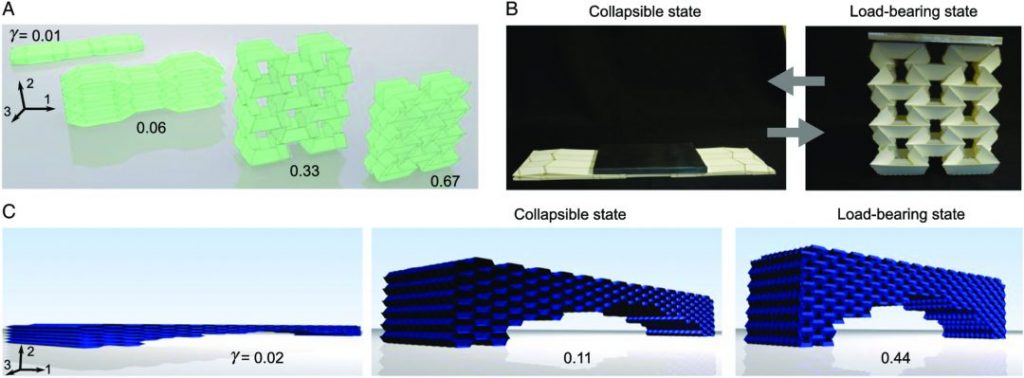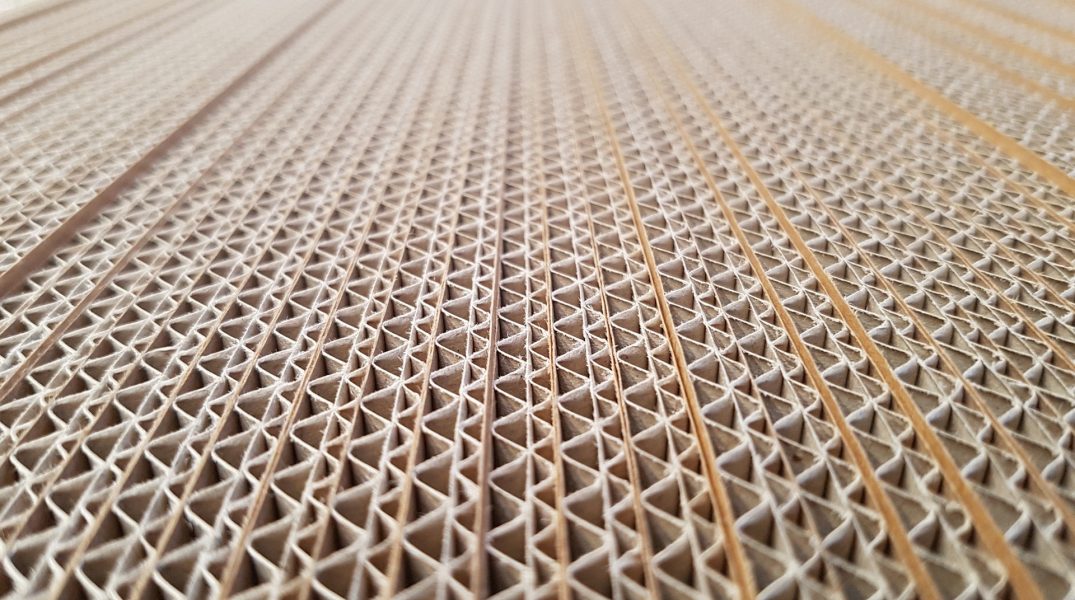Have you ever taken a closer look at the corrugated cardboard packaging materials when you unpack your new closet or bookshelf? Probably not, because you are thrilled to build the new closet and the packaging made from cardboard is likely placed into the recycle bin. There is, however, much research going into the design of these package fillers—much more than you would have thought!
The crux of the cellular paper structure is that it is lightweight yet very stiff. Several volumetric cellular structures with tunable load-bearing behavior have been studied previously. 3D cellular structures can offer enhanced mechanical properties (e.g., lightweight, high specific stiffness and strength, and negative Poisson’s ratio). However, the mechanism of such stiffness enhancement relies on internal interference between surfaces, which usually induces plastic deformation. This means the structure cannot be reconfigurable again, and the kinematic path of the structure becomes unpredictable. Other origami-based reconfigurable structures also suffer from such an uncertainty of the folding motion.
Prof. Jinkyu Yang from the University of Washington in Seattle, USA, studies advanced structures and sensing systems for aerospace, mechanical, and biomedical applications. Together with a team of researchers he employs novel engineered material systems (e.g., non-conventional composite materials and metamaterials) that offer enhanced degrees of freedom in controlling the mechanical response of structures. In a recent publication in Advanced Engineering Materials, Yang demonstrated the concept of reliable mode switch, by using physical prototypes made of paper sheets, polymers, and plastics. Their research is trying to realize a reliable control of load-bearing capability for reconfigurable cellular structures. By leveraging the unique kinematics of the Tachi-Miura Polyhedron (TMP), which is a bellows-like origami, they show that TMP-based cellular structures can exhibit the in-situ transition between collapsible and load-bearing states freely. The mechanism of the load-bearing behavior does not hit any kinematic singularity, therefore our system exhibits reliable switching between these two drastic different configurations.

Since the cellular structure is scalable and reusable, it can be applied to various engineering applications ranging from medical devices (e.g., stent devices), packing materials (foldable yet load bearing package), to aerospace structures (space habitats). To achieve this, one of the important next challenges is to develop rugged, easy-to-fabricate, TMP-based cellular structures beyond the currently presented proof-of-concept prototypes.

















